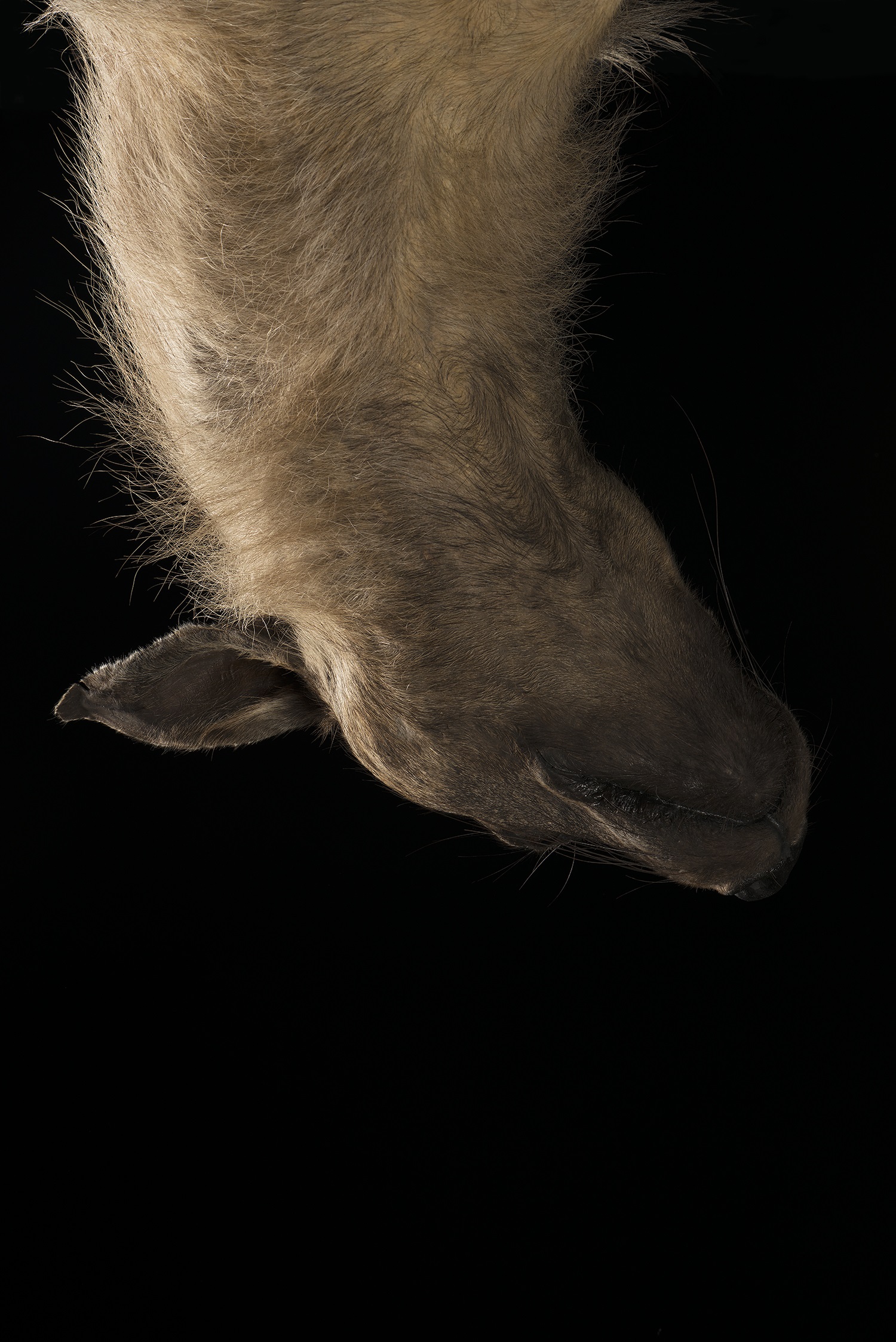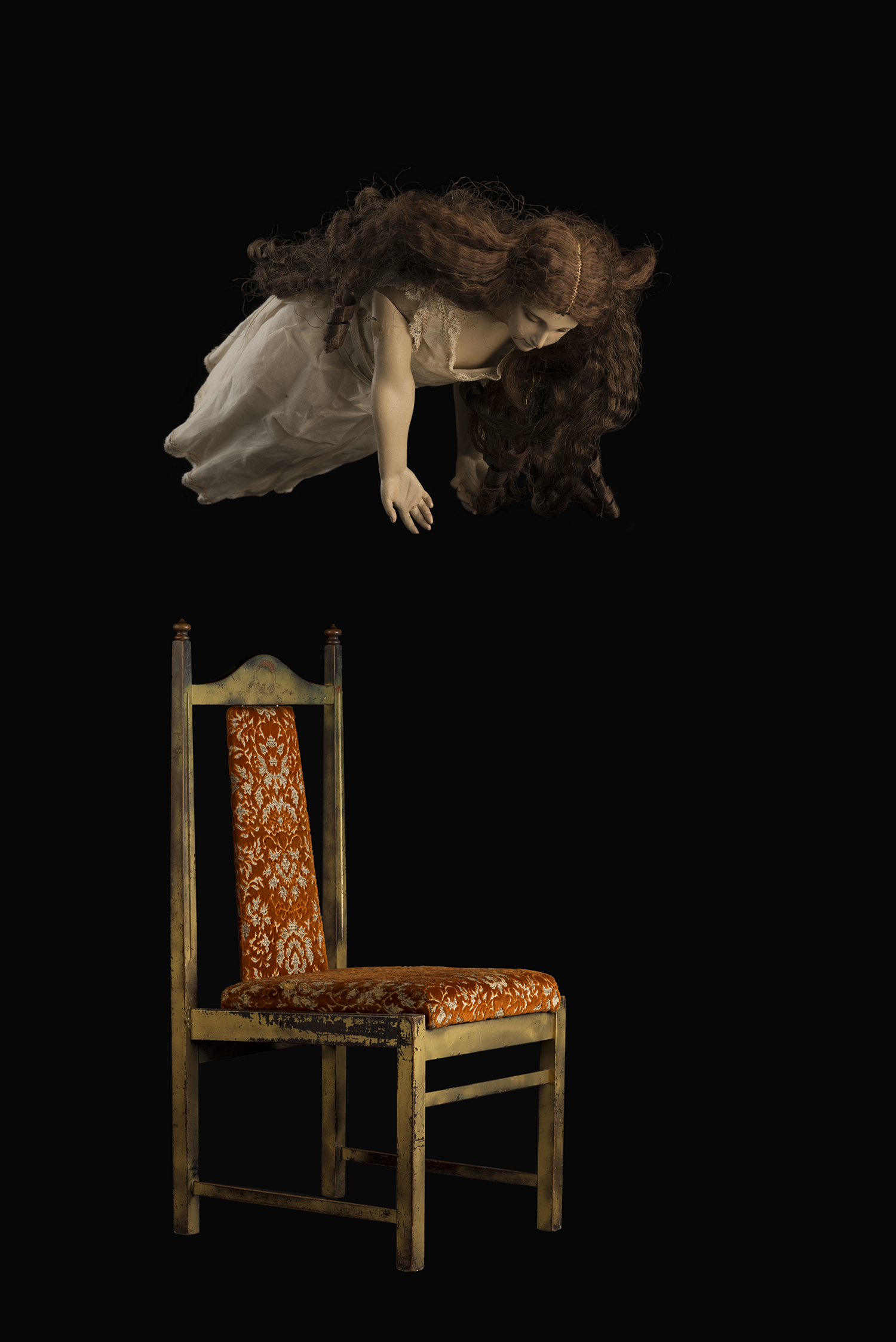Hayley Theyers & Murray Cammick - reviewed
In the dark we are without her Empress light
Hayley Theyers
and
Queens Street
Murray Cammick
Black Asterisk, Auckland
31 May – 22 June, 2019
Reviewed by Nina Seja for PhotoForum, June 2019
Part of the Auckland Festival of Photography
Strange things lurk in the back room. The lights are dimmed, shades are drawn. In the half light, all manner of signs, symbols, and creatures emerge – things that you thought had been pushed into the recesses of your subconscious. To see them presented in the flesh (or at least in two-dimensional form) reminds you that they’re still there. Based on fairy tales and Jungian psychoanalytic philosophies, Hayley Theyers’ show, In the dark we are without her Empress light, at Black Asterisk gallery is a distinct churning of dark zones. If you want provocation, Theyers provides; if you want to dwell in ephemeral spaces, you will find it here too.
The show feels like magic is afoot and you’ve accidentally stumbled and become lost in a cloistered forest, ending up in a medieval setting where kings are held accountable to witches. There are the requisite icons: a toad, a witch, a snake, a bird’s wing, a dagger. A litany of tools for which to bring about transformation or destruction.
In these otherworldly spaces, the tactile is important. Perhaps it’s that you not only begin to look at things in a new way, but you also touch them anew. Maybe it’s that you need to do so as confirmation that reality has truly turned in on itself. Set against black backdrops, the figures’ bodily properties are clear: the toad’s skin is rough and bumpy, the snake’s a golden down of scales. The feathery tuffs and bones of a bird’s disembodied wing take off into flight. The two most horrific are The Witch (2018) and The Beast (2018). Each evokes some Macbethian misdeeds in preparation – this isn’t photography – it’s a direct path to the underworld. In the former image, a close-up shows a partial face with a curling tongue sticking out, as black as the plague. Maybe the king had her taken out (little does he know how these types of fables end!). In The Beast I turned my head upside down, trying to make sense of the figure, seeking some reassurance that the creature was something grounded in this reality: a cat, maybe, or a horse’s neck. Bad idea. There was nothing familiar in what Theyers has conjured: the straw-like fur and leathery ear must be the pet of a demon.
Hayley Theyers, Knowing Grimm, 2018
Children’s roles in fairy tales are critical; they are the innocents or knowers, upending the sealed adult world and able to see the dangers and mysticism that hide beyond the veneer of the everyday. In Theyers’ world, they’re active participants in the narrative, seemingly siding more with the witch’s spell-making. This direct address to both the viewer and to the fairy tale lineage occurs in Knowing Grimm (2018). Two haunting young people stare confrontationally outwards, horror-like Stephen King. All signs seem to be pointing to you’re next for the cauldron. Most eerie, though, is the majestic Milk and Honey (2018). There’s a painterly, Rembrandt-like quality. An aproned girl has captured someone in a golden sack, reminiscent of an amniotic sac, albeit one that glitters.
What’s powerful about Milk and Honey, and indeed, all the photographs, is their ability to suggest a larger story beyond the frame. Drawing on both fairy tales and Jungian psychology’s collective unconscious means there’s ample material for one’s mind to latch onto: these are popular tropes. However, the level of craft and attention to detail means that these are no mere illustration to supplement a dusty book meant to terrify children into good behaviour. They offer opportunities to inhabit places of imagination outside of ordinary time and beyond the banal.
Hayley Theyers, Milk and Honey, 2018
It’s an interesting path from Theyers’ eeriness to the rambunctiousness of Murray Cammick’s show, Queens Street, held simultaneously at Black Asterisk. In many ways, they’re perfect companion pieces: to the back room for a letting-out of haunting things – to the front room to be revived. Once you’ve emptied out your subconscious, immerse yourself in earthly entertainment. It’s always a pleasure seeing Cammick’s photographs. Being a history lover and archive fiend is one reason; however, even though the images are over forty years’ old, they don’t seem dated, at least not in their energy. They’re insistently present, conveyed by both the subjects within the frame and the obvious presence of the man behind the lens. It’s all too easy to let a thesaurus of pleasure do the talking: joyous, libido rich (as in an uncontained life force), satisfying, and complete. The images are a snapshot of Queen Street life, in Auckland, in 1975–77. The subjects are mostly women (in all their manifestations, including drag) out on the Auckland streets (Cammick originally thought about calling the show Girls, girls, girls). The show reads as the other side of the same coin of Cammick’s notable Flash Cars series, which features V8 boy racers, also on Queen Street. In both instances, the participants are part of subcultures: the gas-guzzler lovers, the drag queens, the wide-eyed youth out on the town for the evening.
George Hubbard describes Cammick as having an empathic view of those he photographs; I agree – there is no clear aversion to the photographer nor turning away from his look.[i] Instead, the individuals pout and pose for him, as in Keri and two friends, platform shoes, Fort Lane, 1975 (2019) and Keri and telephone box, Queen St at Wyndham St, 1976 (2016). Cammick notes, “I am pleased that I captured their dream of being fabulous models. Their beauty was a street reality.”[ii] In others, there’s a call and response between the subject and the photographer, such as in Hot Chips, Imperial Arcade, 1975 (2019). The expression is open and welcoming – a second of shared conviviality between two people on an Auckland night. This feeling also appears in Big smile, Queen St, 1976 (2019). In our current times of the limited emotional range in Instagram selfies, to see someone unrestrainedly beaming is like an exhale of relief: humanity in action.
Murray Cammick, Big Smile, Queen St, 1976
There is a fleeting wistfulness in a few of the images. We all may know the feeling well: when you’re in the midst of a riotous, unfurling evening with friends and there’s a sliver of self-reflexivity, when you realize the passing nature of time. Young woman in fur, Queen Street, 1976 (2019) is a perfect representation of this state of mind. The subject’s gaze vanishes into the distance, stilled in the moment. It’s a good chance to take a visual breath before venturing toward the liveliness of the other photographs. The subjects were known for their attention-grabbing antics, after all. Cammick says, “Their walk up Queen Street would cause a stir – high fashion, high platform heels, and high as a kite.”[iii]
Murray Cammick, Young woman in fur, Queen St, 1976
This empathy and feeling with is also prominent in the apparent camaraderie between his subjects. It’s a lovely thing to see friends enjoying each other’s company, and these instances of togetherness are something to be celebrated. Hands are interlinked; figures curve into each other; a hand rests on a shoulder. The group in Keri and Violet and four friends, 1976 (2019) encapsulates this, with a comfortable closeness between all. Keri and two friends, platform shoes, Fort Lane, 1975 depicts the trio hamming it up for the camera – they’re having a hoot. It makes the viewer feel as if they’re on the scene as well, immersed in the hijinks.
The element that most fixes these photographs into the time period from whence they came is the fashion, impressive as it is. In the aforementioned image, the platform shoes are of mesmerizing height. There are flounces and ruffles, sequins and boas – and bell bottoms. That goes without saying. There’s the chic decadence of a performer in Les Girls at Mojo’s Night Club, Roxy Music Press Conference, 1975 (2019). Mojo’s was a club on the corner of Queen and Wakefield Streets with drag queen acts and sly grog. Though it’s been called seedy, the photographer doesn’t show it. Instead, there is an elegant draped costume and the controlled gaze of notable showgirl, Niccole Duval. In another photograph, Duval is double-exposed, arms open wide and material billowing out behind. It’s a brilliant look that immortalizes the vitality of stage performance.
The paired shows, as part of the Auckland Festival of Photography 2019 edition, are a dynamic offering of both past and present, and of the cerebral and the embodied. The black and white grit of Cammick’s photographs is an authentic street-style outing. This stands in juxtaposition to Theyers’ limited palette, infused with golds and blacks and flesh tones. The shows are a good reminder of how diverse photographic practice can be, and of the potential of how personal and collective mythologies can be engaged.
Nina Seja is a writer based in Auckland. She has written extensively on visual culture, particularly photography.
[i] George Hubbard, Facebook comment, June 5, 2019.
[ii] Murray Cammick, show notes, Queens Street, Black Asterisk, n.d.
[iii] Ibid.








